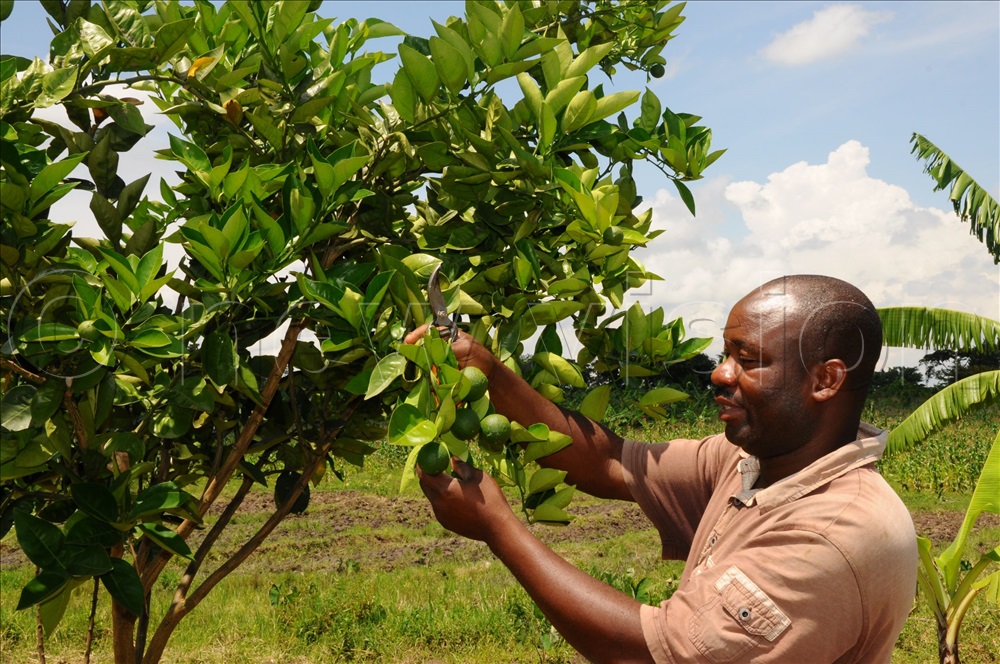By Umar Nsubuga
Improved citrus varieties are not resistant to pests and diseases. However, they can be successfully grown if grafted on resistant rootstocks like rough lemon.
Rough lemon is quick growing, drought resistant, has a short maturity period and is resistant to pests and diseases.
Henry Sekyewa an agronomist gives tips.
-Choose ripe rough lemon fruits free from pests and diseases. Extract the seeds and then select well-formed seeds and dry them in the shade for two to three days.
-Plant the seeds in a box filled with a mixture of soil, manure and sand. Provide moisture, warmth and aeration. The seeds normally take two weeks to germinate.

-One month after germination, transplant strong and healthy-looking seedlings into poly pots. Fill poly pots with sand, followed by rotten sawdust and top soil mixed with compost. The poly pot should have holes at the bottom and sides to improve drainage.
During grafting, the lemon and orange plants are joined together and tied by budding. Budding is done by cutting off a lemon bud and the young orange stem inserted into the lemon cut bud and tied.
The lemon bud is cut to create space for fixing the young orange stems of the improved variety. The grafting can be done using the Valencia and Washington navel onto the lemon and tangerine rootstock.
-Prepare the field. Remove all perennial weeds and allow trash to rot. Dig holes spaced at 6×6 metres, 60cm deep and 1 metre wide. Fill the holes with manure mixed with top soil.
-Transplant the potted grafted seedlings at the beginning of the rains, from March to June, for the first rains and August to September for the second rains.
-Water the plants in the morning and evening, depending on the availability of rain until they are established.





